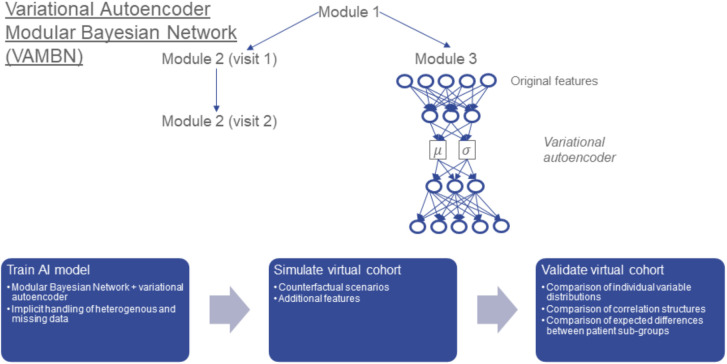Figure 1.
Conceptual overview about Variational Autoencoder Modular Bayesian Network VAMBN) approach: In a first step, a low dimensional representation of known modules of variables is learned via HI-VAEs. The same group of variables (e.g., module 2) may have been assessed at different visits of the study, for example visits 1 and 2. Accordingly, we get a low dimensional representation of module 2 at visit 1 and module 2 at visit 2. In a second step, a Bayesian Network is learned between low dimensional representations of modules, such that the temporal ordering of visits is considered and further constraints explained later are fulfilled. We call the resulting structure a Module Bayesian Network (MBN). The MBN explicitly models missing data at specific visits. Virtual patients can be generated by sampling from the MBN and the HI-VAEs for each module. The “do” calculus allows for simulation of counterfactual interventions into virtual cohorts, such as adding features from another dataset. We carefully validate virtual cohorts by comparison against real patients.

